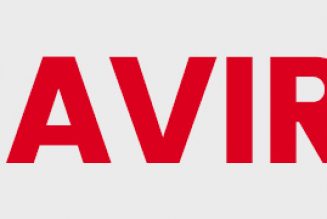Careers
Dawn of AI tools: Adopt quickly or lose out in the future workplace
Wednesday February 08 2023
The age of widespread artificial intelligence has arrived practically, no longer theoretically. FILE PHOTO | SHUTTERSTOCK
The world is abuzz with chatter. From office workers gathered around water coolers in Chicago to staff on Zoom calls in London to eager university students in Tokyo to nervous public relations firms in Buenos Aires over to right here in Nairobi with IT programmers, the world of work is mixed with anticipation, trepidation, dread, and eagerness as it looks at the disruptive potential of new online virtual artificial intelligence (AI) tools.
The age of widespread artificial intelligence has arrived practically, no longer theoretically. We all knew it was coming. But did we truly grasp the raw awesome power of the technology?
“White collar” professional jobs, once thought safe from automation replacement since the industrial revolution, are now at risk.
Professionals intending to survive must not buck the AI trend, but instead, get on board and learn how to utilise it to their professional advantage better than their competitors.
As a global society, we have a long history of how technology changes our work habits and shrinks or alters the workforce.
Read: Kenya ranked fifth in Africa on AI readiness
I personally remember how in commercial banking in America in the 1990s, when personal computers became affordable for everyone to have in their offices, the bank reduced the number of typing secretaries from roughly one per professional to only one per department.
AI will now take another step forward and dramatically alter administrative assistants’ duties.
Can we fight technological progress? No, even though many of us may like to. Back in 1880 when the telephone rolled out in New York City, considerable notice and concern was given to what would happen to the thousands of young people engaged as messengers since the telephone would put the vast majority of them out of work.
Imagine how our lives would be today if the lobbying was successful and the telephone was blocked from rollout.
Likewise, with OpenAI’s new ChatGPT AI that debuted in November last year, we should not expect any potential regulatory curbs to prove successful. We must adapt and move forward with the new technology, not against it.
ChatGPT and the myriad of competing websites, including Google’s Bard, will have the immediate effect of revolutionising our Kenyan industries of higher education, information technology, marketing, public relations, communications, real estate, conferences, events, translation, management, human resources, statistics, financial advisory services, insurance, healthcare, among many more.
The adjustment costs and periods of economic pain felt by many employees in these industries will be harsh. But along with the pain comes great opportunities for improved quality and efficiency.
Similarly, AI tools such as DALL-E, Starryai, and Jasper, along with numerous others, will disrupt the art and media world.
As an example, the integration of ChatGPT into the premium version of Microsoft Teams will provide virtual meetings with live real-time transcription of the whole narrative throughout the meeting as well as AI-generated summaries of key themes, analysis of what has been said, automatic to-do-lists for tasks agreed, and instant calendar bookings for key dates agreed during the meeting.
No more need for note-taking or manual follow-up. It will likely make in-person non-AI enhanced meetings so drastically less useful, burdensome, and unproductive, that even Microsoft Teams may be kept on during live in-person meetings or even scrap in-person meetings altogether.
AI sites are not perfect. They often pull from slightly outdated and sometimes incorrect false fake news or fake publication sources. But over time, we should expect these technology kinks to be worked out.
In Ajay Agrawal, Joshua Gans, and Avi Goldfarb’s new book, they argue that a system solution such as virtual AI changes a workflow, disrupting old ways of doing things and generating new ones.
We must adapt, and adapt quickly because the professional space will be profoundly affected.
One industry, in particular, seems to generate the most press in uproar at the onset of virtual AI websites: the higher education space.
From public announcements to holding meetings with faculty and stating they unrealistically hope students do not figure out about ChatGPT to lamenting how to catch those submitting papers using AI to trying to block access to the sites from on-campus networks as if that would deter student usage.
Instead, universities and in particular business schools must adopt a different approach.
Expect that all work submitted by students will utilise every legitimate online tool available, and we should applaud students for doing so.
Read: Google unveils ChatGPT rival Bard, AI search plans in battle with Microsoft
AI will warrant online search engines largely far more irrelevant in their impractical chaotic search results.
In the same way we now support the use of calculators in classrooms and on tests despite initial resistance decades ago and, likewise, we embrace the use of robust statistical analysis software such as Mplus and Amos for complicated structural equation modelling for doctoral candidate research without forcing students to solve arcane formulas by hand despite initial resistance, we now must embrace AI sites and teach students to use them, utilise the results, and enhance their learning outcomes with AI. Technology will now never go away.
There are now sites, such as GPTZero, that can detect whether a student’s assignment was generated with AI sort of as a more modern form of virtual plagiarism check.
But let us view technology as a writing tool rather than a writing hindrance. We can narrow down our examinations and assignments to be less AI susceptible.
The higher education sector has already experienced, survived, and thrived during the significant upheaval caused by technology in the last forty years, including when the internet came about and online searches made conducting graduate-level literature reviews far easier than the old method of sifting through microfilm/fiche and manually checking card catalogues.
This new technological disruption will settle down and those faculty who incorporate AI usage even into a part of their curriculum across all subjects will make our Kenyan students even more prepared for the future and global competition.









